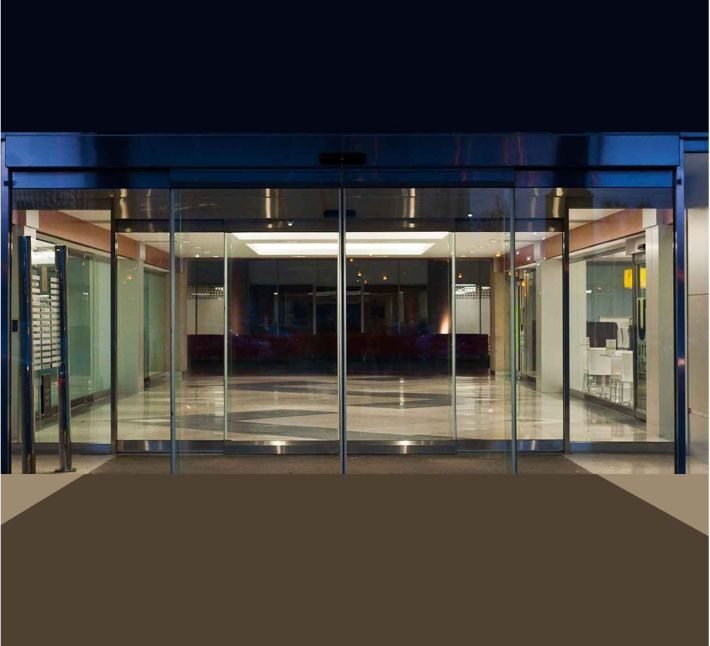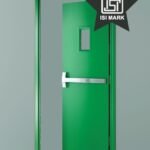Commercial Doors:
Commercial Doors are often taken for granted, yet they are essential to the functionality, safety, and design of any business or public building. These doors are not just entryways—they play critical roles in security, accessibility, energy efficiency, and aesthetics. Whether you’re outfitting a new property or upgrading existing infrastructure, understanding commercial doors is vital. This guide breaks down everything you need to know in simple, detailed language.
What Is a Commercial Door?
A commercial door is specifically designed to handle the demands of high-traffic environments, increased security requirements, and compliance with safety regulations. Unlike residential doors, commercial doors are built to endure frequent use and harsh conditions.
Example: Think of the difference between your home’s front door and the entrance to a busy shopping mall. The mall door must withstand constant operation, potential forced entry, and often includes automation—this is what defines a commercial door.
Key Characteristics of Commercial Doors
- Durability
Built from robust materials like steel, aluminum, fiberglass, or heavy-duty wood, commercial doors can withstand heavy usage, impacts, and varying environmental conditions. - Security
Features like multi-point locking systems, reinforced frames, panic bars, and heavy-duty hinges provide strong protection against unauthorized entry. - Functionality
Beyond basic operation, commercial doors may include:- Automatic openers and closers
- Fire resistance
- Access control (keycards, biometrics)
- Soundproofing
- Code Compliance
These doors must meet various safety and accessibility regulations, such as fire safety and ADA (Americans with Disabilities Act) compliance. - Traffic Flow
Designed for efficiency, they handle large volumes of pedestrian movement with wide openings and smooth operation.
Types of Commercial Doors
1. Hollow Metal Doors (Steel Doors)
- Best for: Offices, schools, hospitals, warehouses
- Pros: Highly durable, secure, fire-rated options, cost-effective
- Cons: Heavy, can dent under extreme force
2. Aluminum Storefront Doors
- Best for: Retail stores, restaurants, office lobbies
- Pros: Modern look, natural light, corrosion-resistant
- Cons: Less secure than solid doors, glass can break, lower insulation if not well-fitted
3. Architectural Wood Doors
- Best for: Executive offices, hotels, libraries
- Pros: Warm, elegant appearance; sound-dampening
- Cons: Expensive, higher maintenance, less durable in high-impact areas
4. Fiberglass Doors
- Best for: Coastal areas, exterior doors needing a wood look
- Pros: Extremely weather-resistant, low maintenance, good insulation
- Cons: Higher upfront cost
5. Automatic Sliding Doors
- Best for: Airports, supermarkets, hospitals
- Pros: Hands-free access, energy efficient, ADA-friendly
- Cons: Requires regular maintenance, complex mechanics
6. Roll-Up/Overhead Doors
- Best for: Warehouses, fire stations, garages
- Pros: Space-saving, secure, customizable sizes
- Cons: Not ideal for pedestrian use, needs frequent upkeep
Components of a Commercial Door
Understanding what makes up a commercial door helps ensure optimal selection and maintenance:
- Door Slab/Panel: The main body of the door
- Door Frame: Anchors the door to the wall structure
- Hinges: Usually heavy-duty or continuous for durability
- Locking Hardware: Can include standard locks, panic bars, access control systems
- Door Closer: Ensures the door shuts safely and consistently
- Panic Bar: Required by fire codes for safe emergency exits
- Weatherstripping/Gasketing: Enhances energy efficiency and sound insulation
- Threshold: Located at the bottom, provides sealing and smooth entry
- Kick Plates: Protect the lower section from impact damage
Key Considerations When Choosing a Commercial Door
- Security Requirements: Higher risk areas need reinforced materials and advanced locks
- Traffic Volume: More traffic demands greater durability and sometimes automation
- Fire Rating: Ensure compliance with fire safety standards
- ADA Compliance: Doors must be usable by individuals with disabilities
- Energy Efficiency: Insulation and sealing reduce utility costs
- Design & Aesthetics: Align with your building’s architecture and brand image
- Noise Control: Choose doors with soundproofing features when needed
- Budget: Costs vary significantly based on materials and features
- Maintenance Needs: Consider ongoing servicing for automatic or mechanical parts
- Local Codes: Always comply with local building and safety regulations
Conclusion
Commercial doors are a vital yet often underestimated investment in the success of a business or public space. They impact safety, efficiency, customer experience, and operational reliability. By understanding the different types, key features, and selection factors, you can make informed decisions tailored to your facility’s unique needs.
Whether you’re constructing a new building or upgrading an existing one, selecting the right commercial door will contribute significantly to long-term value and peace of mind.



